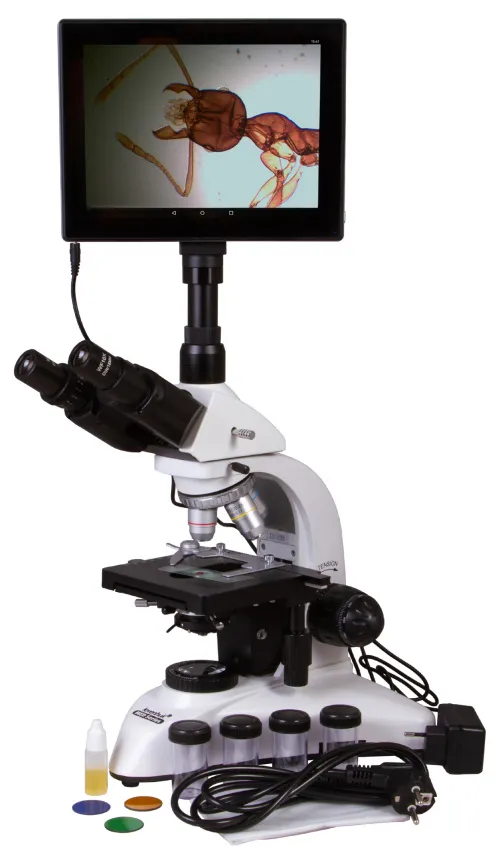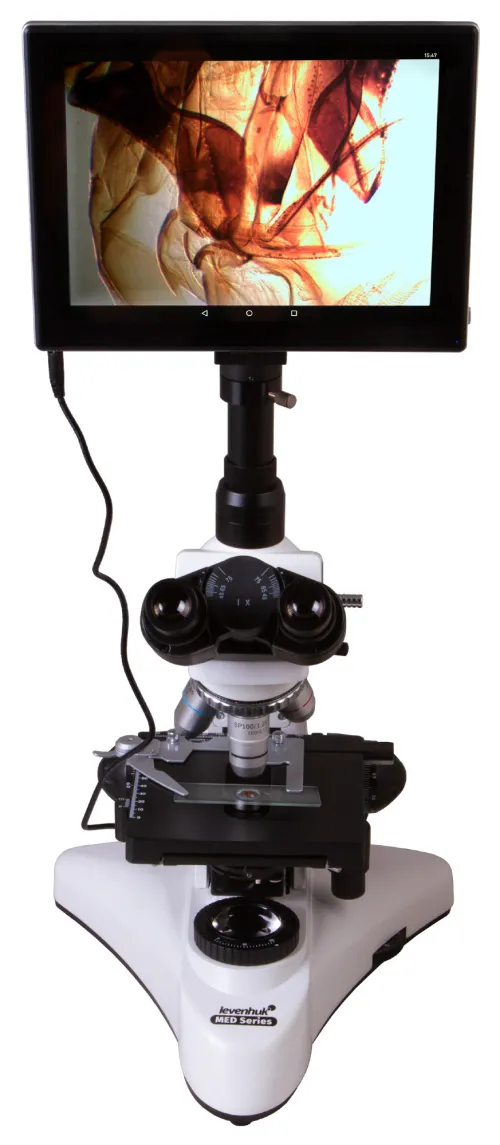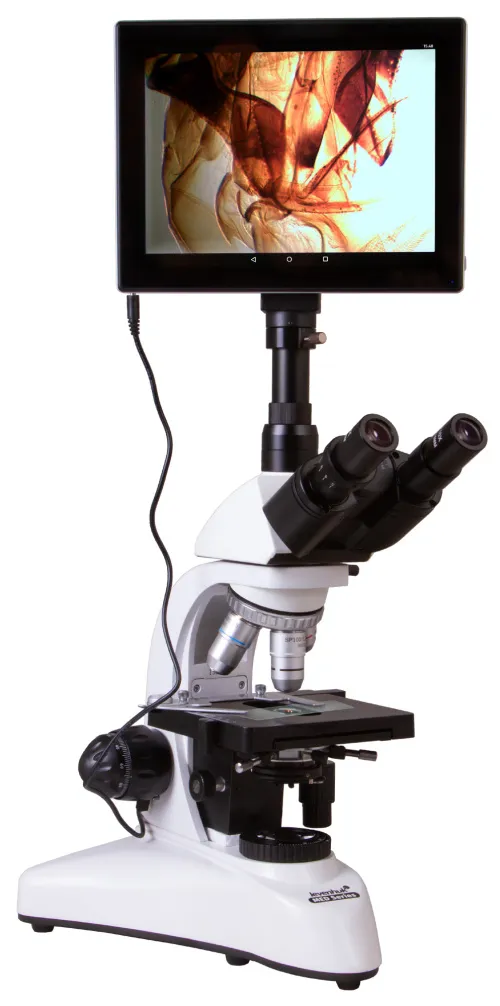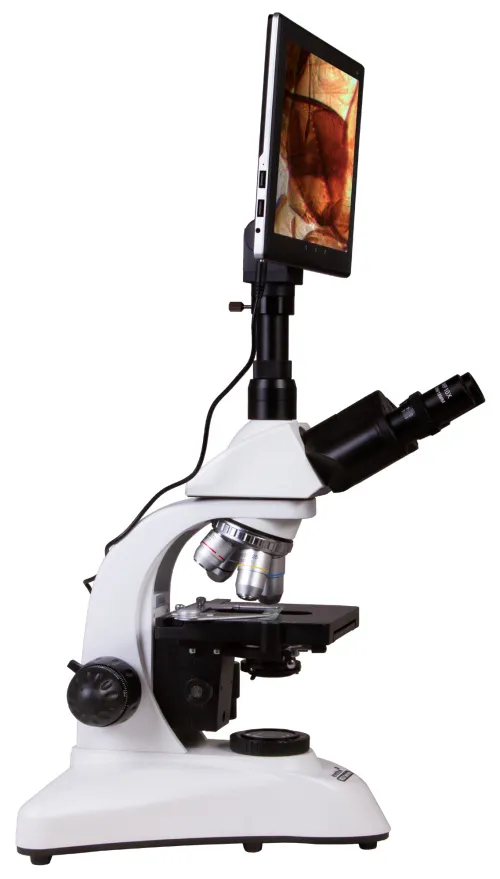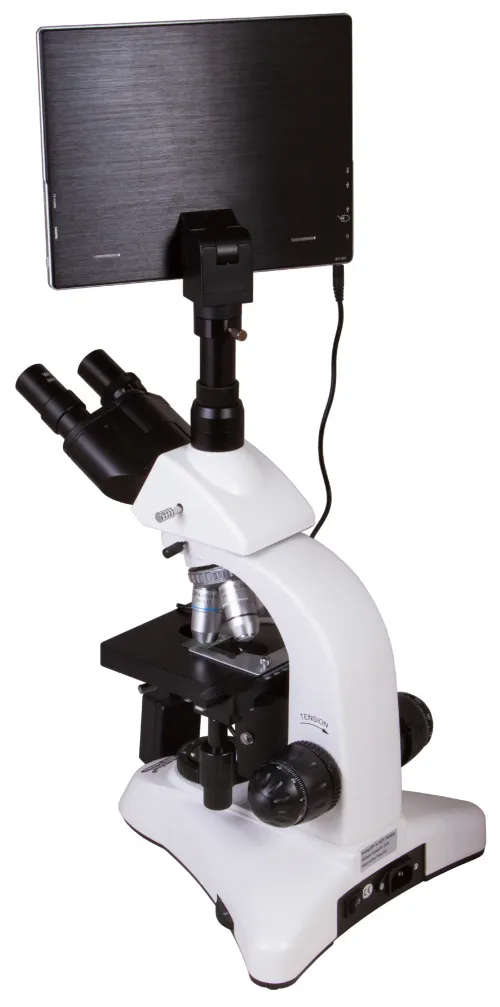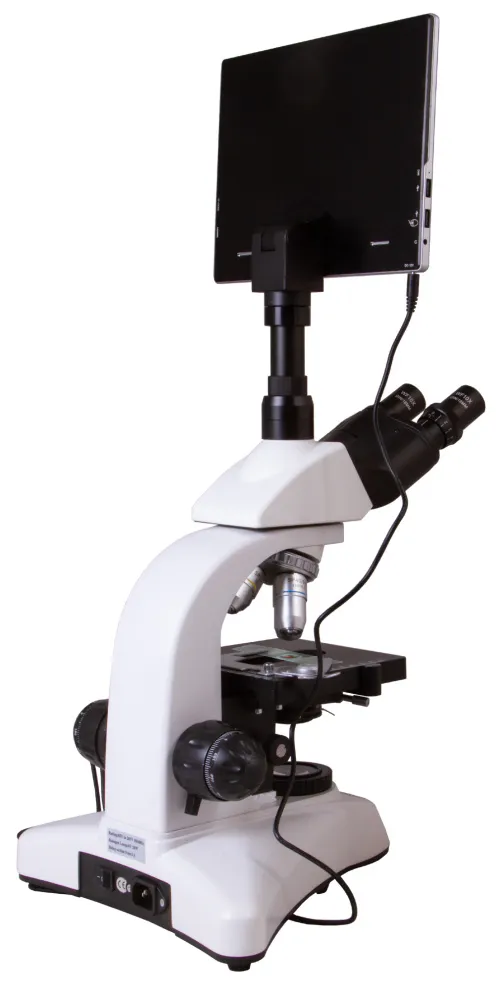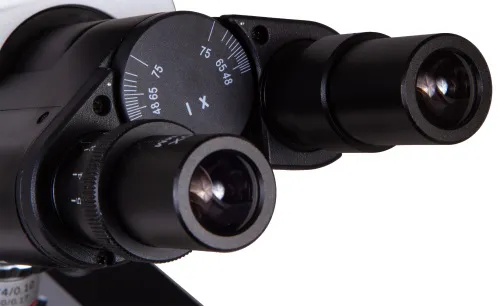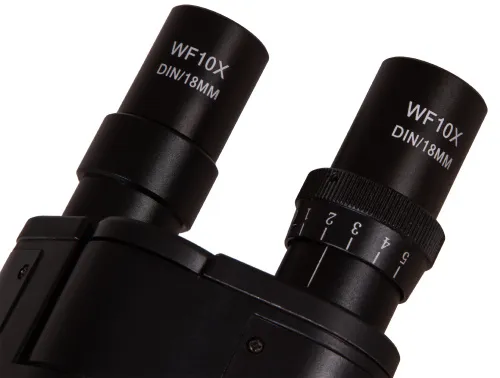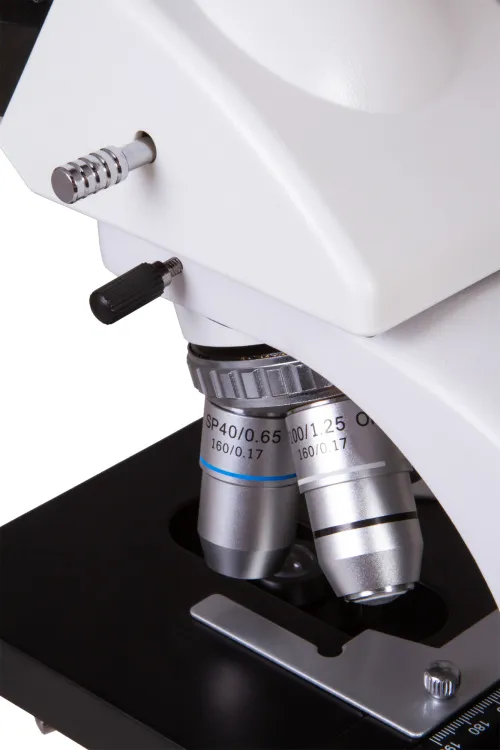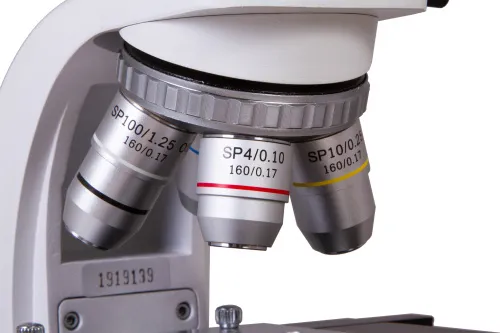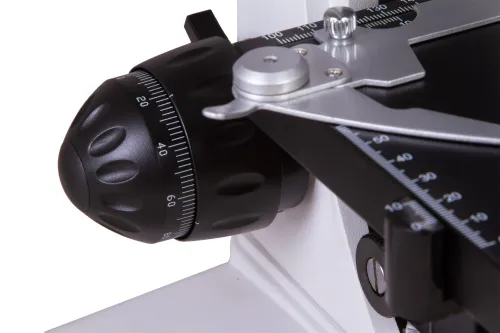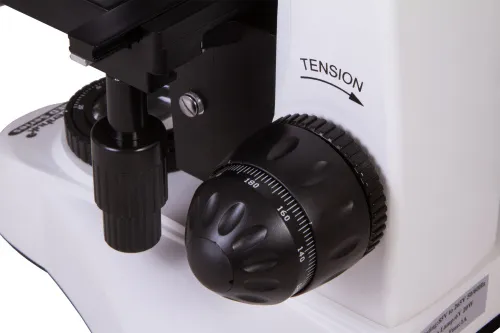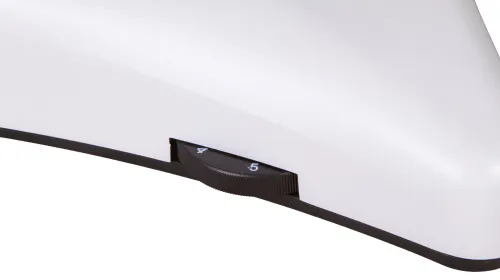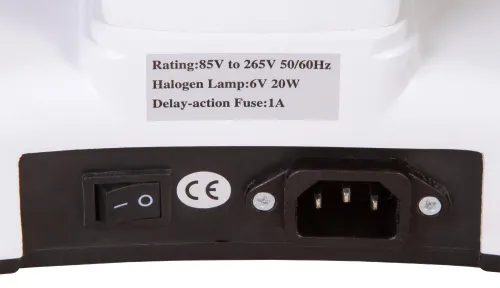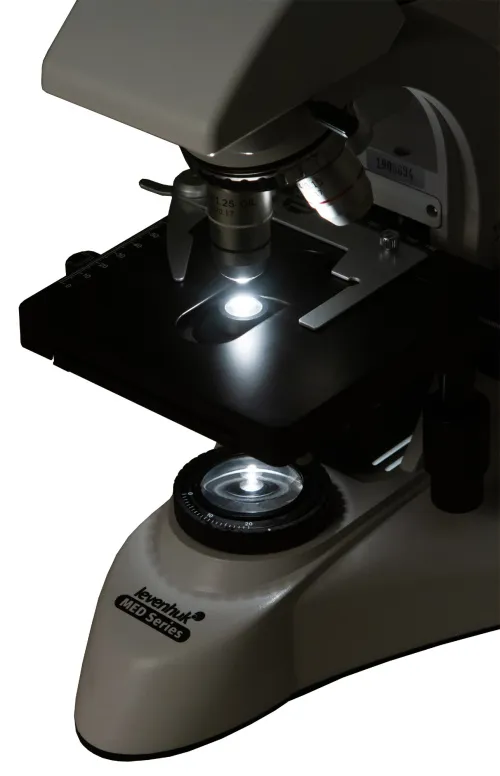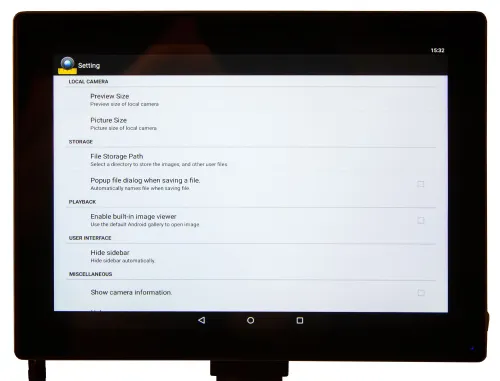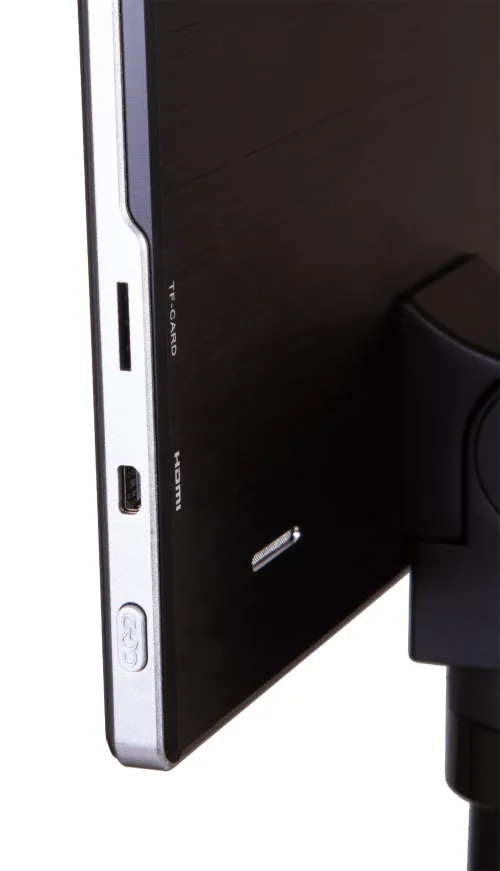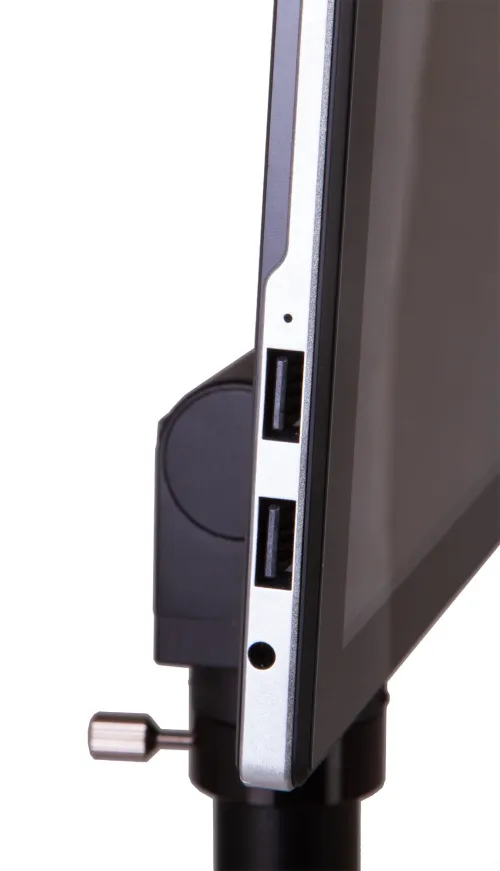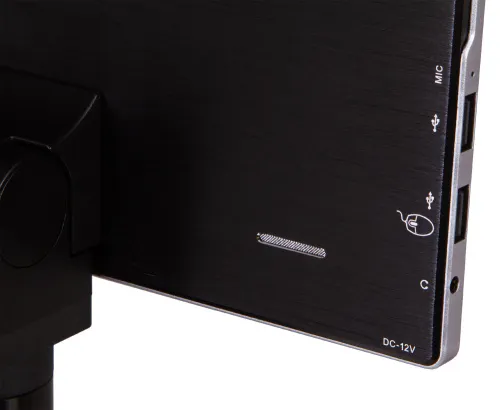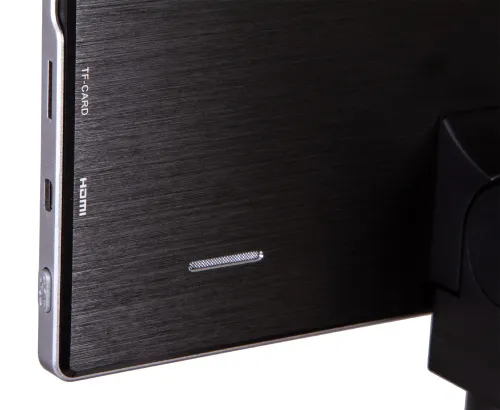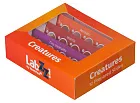Levenhuk MED D20T LCD Digital Trinocular Microscope
Magnification: 40–1000x. Trinocular head, 5MP digital camera with an LCD screen, semi-plan achromatic objective lenses, an Abbe condenser with an iris diaphragm, and a filter holder
| Product ID | 73991 |
| Brand | Levenhuk, Inc., USA |
| Warranty | lifetime |
| EAN | 5905555004938 |
| Package size (LxWxH) | 64x35x32 cm |
| Shipping Weight | 8.54 kg |
Levenhuk MED D20T LCD Microbiology Digital Microscope is a professional optical instrument for bright field observations. Its main feature is a 5MP digital camera with an LCD screen that can transmit an image from a microscope objective in a real-time mode, and it allows for shooting videos and taking pictures of research. In addition, the microscope uses semi-plan achromatic optics and allows for setting up Köhler illumination. This microscope is useful in solving a wide range of problems in a field of microbiology, medicine, and research in various scientific fields.
High-class semi-plan achromatic optics
Trinocular 360° rotatable head has a binocular visual part, which is inclined at 30°. There is a beam splitter. A digital camera is installed in the vertical tube. Wide-field eyepieces provide good visibility and allow for diopter adjusting. The objective lenses feature various magnifications; 40x and 100x objectives have protective spring-loaded frames. You can conduct observations at maximum magnification using oil immersion (a bottle with immersion oil is included in the kit). The optics are protected by an anti-fungal coating.
Convenient work with microscope slides
There is a stage under the optics unit. The double-layer stage is equipped with a mechanical scale. The coarse and fine focusing knobs with small pitch allow for sharpness adjustment. The observations are held in the transmitted light: a 20W halogen light source is located under an Abbe condenser, which is equipped with a diaphragm and filter holder. The kit includes three light filters. The light brightness is adjustable; it is powered by an AC power supply.
Levenhuk MED D20T LCD is a modern microscope for microbiology research
A digital camera is also worth mentioning. In addition to an LCD screen, this camera is compatible with a lot of additional equipment. You can connect a mouse, keyboard, and headphones to the camera. An image from an objective lens can be transmitted to a built-in or external screen; flash drives and memory cards are supported. The camera does not require installing additional software. With the help of the utility software, you can edit recorded photos and videos, choose location for files storage, change camera settings, or perform simple processing of photos and videos. The software allows for adjusting size, image brightness and contrast, gamma, sharpness and saturation, exposure time and white balance, calibrating a camera and objective lenses, measuring specimens or structures (several measurement units are available). In addition, the program allows for carrying out a particle analysis. The camera makes working in a laboratory easier and more practical for an explorer: there is no need to observe slides through eyepieces as an image can be seen on a built-in LCD screen with sensor control.
The Levenhuk MED 20 series includes high-class microscopes for a microbiology laboratory.
Features:
- Trinocular laboratory microscope
- Semi-plan achromatic optics, magnification of 40x to 1000x
- Anti-fungal coating of all optical surfaces
- Halogen light powered by an AC power supply
- Köhler illumination is available
- The kit includes a 5MP digital camera with an Android-based LCD screen
The kit includes:
- Microscope base with a stand
- 360° rotatable trinocular head
- Semi-plan achromatic objective lenses 4x, 10x, 40xs, 100xs (oil) with an anti-fungal coating
- Wide-field eyepieces: WF10x/18mm with an anti-fungal coating (2 pcs)
- Abbe condenser N.A. 1.25 with an iris diaphragm and a filter holder
- Filters: blue, green, yellow
- Bottle of immersion oil
- Fuse (2 pcs)
- Power cord for microscope
- Dust cover
- 5MP digital camera with an LCD screen
- Power cord for camera
- User manual and lifetime warranty
Caution:
Please refer to the specifications table for the correct mains voltage and never attempt to plug a 110V device into 220V outlet and vice versa without using a converter. Remember that mains voltage in the U.S. and Canada is 110V and 220–240V in most European countries.
Some things you can see under a microscope:





Levenhuk MED D20T LCD Digital Trinocular Microscope is also compatible with other Levenhuk digital cameras (additional cameras are purchased separately). Levenhuk cameras are installed in the eyepiece tube instead of an eyepiece. This microscope is also compatible with any other digital microscope cameras.
| Product ID | 73991 |
| Brand | Levenhuk, Inc., USA |
| Warranty | lifetime |
| EAN | 5905555004938 |
| Package size (LxWxH) | 64x35x32 cm |
| Shipping Weight | 8.54 kg |
| Type | biological, light/optical, digital |
| Microscope head type | trinocular, digital screen/PC monitor |
| Optics material | optical glass with anti-fungal coating, optical glass with anti-reflective coating |
| Head | 360 ° rotatable, with switching (dividing) luminous flux |
| Head inclination angle | 30 ° |
| Magnification, x | 40 — 1000 |
| Eyepiece tube diameter, mm | 23.2 |
| Eyepieces | WF10x/18mm, wide-field with diopter adjustment (2 pcs.) |
| Objectives | semi-plan achromatic: 4x, 10x, 40xs, 100xs (oil immersion) |
| Revolving nosepiece | for 4 objectives |
| Interpupillary distance, mm | 55 — 75 |
| Stage, mm | 140x140 |
| Stage moving range, mm | 75/50 (movement in horizontal (X and Y) directions) |
| Coarse focusing travel, mm | 17 |
| Stage features | mechanical double-layer |
| Eyepiece diopter adjustment, diopters | ±5 |
| Condenser | Abbe N.A. 1.25 with an iris diaphragm and filter holder |
| Diaphragm | iris |
| Focus | coaxial, coarse (0.5 mm) and fine (0.002 mm), with rack and pinion |
| Body | metal |
| Illumination | halogen |
| Brightness adjustment | ✓ |
| Power supply | 100–240V |
| Light source type | 6V/20W, 85–230V AC |
| Light filters | blue, green, yellow |
| Additional | collector lens, Köhler illumination |
| Special features | LCD screen 9.4 inch, color, sensor; built-in memory: 4GB |
| Ability to connect additional equipment | support of microSD cards with capacity up to 32Gb; monitor/TV (with HDMI port); a flash drive, a mouse, a keyboard (with a USB connector); headphones (3.5mm) |
| User level | experienced users, professionals |
| Assembly and installation difficulty level | complicated |
| Application | laboratory/medical |
| Illumination location | lower |
| Research method | bright field |
| Digital camera included | ✓ |
| Pouch/case/bag in set | dust cover |
| Megapixels | 5 |
| Sensor element | 1/2.5" |
| Pixel size, μm | 2.2x2.2 |
| Video recording | yes |
| Image format | *.jpg |
| Video format | *.3gp, 1080p |
| White balance | manual, automatic |
| Exposure control | manual, automatic |
| Sensitivity, V/lux-sec@550nm | 0.53 |
| Frame rate | 15 frames per second |
| Usage location | the third 23.2mm ocular tube of the microscope |
| Software, drivers | Android 5.1 (multilingual) |
| Programmable options | measurement, brightness, particle analysis, etc. |
| Output | USB 2.0 (2 pcs), mini HDMI, Wi-Fi, TF memory card slot |
| Camera power supply | DC 12V/2A, via AC adapter |
We have gathered answers to the most frequently asked questions to help you sort things out
Find out why studying eyes under a microscope is entertaining; how insects’ and arachnids’ eyes differ and what the best way is to observe such an interesting specimen
Read this review to learn how to observe human hair, what different hair looks like under a microscope and what magnification is required for observations
Learn what a numerical aperture is and how to choose a suitable objective lens for your microscope here
Learn what a spider looks like under microscope, when the best time is to take photos of it, how to study it properly at magnification and more interesting facts about observing insects and arachnids
This review for beginner explorers of the micro world introduces you to the optical, illuminating and mechanical parts of a microscope and their functions
Short article about Paramecium caudatum - a microorganism that is interesting to observe through any microscope


